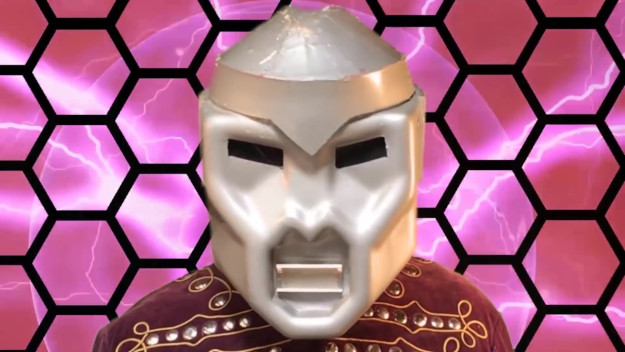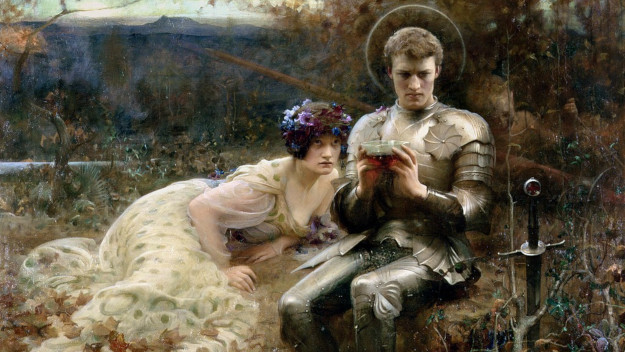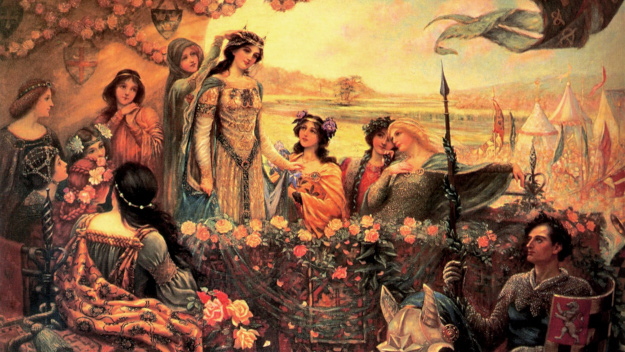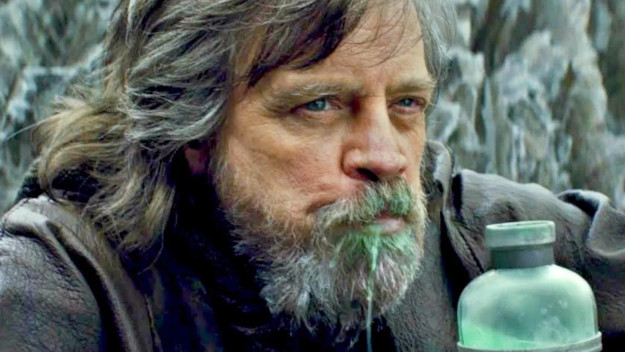
This article was two years in the making, but here it is.
Edit (5/24/2020): A portion of a sentence has been cleaned up for flow.
At certain points in the past few days, I spent some time reflecting upon how legends and tales evolve and shape our present environment. While this was initially done in service of the production of my upcoming short stories, I couldn’t quite find some of the answers that I was looking for. Because of this, I became distracted by additional research until I came across this video by Doomcock.
Much like his previous videos, this one theorizes that Star Trek, Star Wars, and Doctor Who are being vandalized in some way. While I can’t comment on Star Trek and Doctor Who just yet, I can tell you that he’s dead wrong about Star Wars, and I shall start off this little journey with an admission of fault on my part that shall form the basis of this piece.
Luke Skywalker’s character wasn’t really assassinated in The Last Jedi, and that movie isn’t quite the franchise killer that I initially thought it was.
Now that I just blew your mind, let’s have a thought about something important.
Western Mythology Has Always Been Subject To The Retcon.

The legend that most of us know is actually the third retcon.
We’ll start small and work our way up with this one.
One of the principal arguments that Doomcock makes in the aforementioned video is that our culture is being blown apart by creatively bankrupt individuals like Rian Johnson, Chris Chibnall, JJ Abrams, and Jodie Whittaker. While I can’t comment on every little change that these people ever made, he consistently states that new ideas and retcons that he doesn’t particularly like are a form of cultural vandalism, effectively turning himself into the right-wing version of a Social Justice Warrior in all but name.
To make matters worse, he completely ignores the fact that Western legends and ideas have been subject to revisions from the very beginning. For the sake of clarity, let’s take a look at one of the biggest myths in the West: The Holy Grail.
There were three major writers who shaped the legend, but they all had different takes on what it was. Early on, Chrétien de Troyes described it as a simple dish with no real value. At around the same time, Wolfram von Eschenbach thought of it as a magical stone that fell to the earth, which influenced Season 10 of Stargate SG-1. However, the most influential variation came from Robert de Boron, who stated that it was Jesus of Nazareth’s cup from the Last Supper.
Which one of these myths is the most truthful? Are they a form of cultural vandalism or are they reflections of the authors? And of course, is it really so hard to believe that lore can be ever so slightly tweaked to develop a story, so long as it keeps things interesting and is done for the right reasons?
Where Did Luke’s Arc Come From?

Think of this painting by Herbert Draper in far darker terms.
Like many of you, I struggled with the development of Luke Skywalker in The Last Jedi. At first, it was depressing to see that one of the most famous heroes in cinema history had grown to become a borderline suicidal hermit. I cringed when he stated that the Jedi needed to end, and I wondered why he would even think of attempting to kill his nephew while he slept. However, my opinion started to soften because the images got stuck in my head over the past several years, and everything fell into place when I stumbled into discovering where this storyline might have come from.
To keep things short and sweet, I no longer think that Luke Skywalker’s arc is a repudiation of mythology. Instead, it seems to be a space fantasy echo of The Death of Arthur.
Why, you ask? Consider the following!
The Death of Arthur is Sir Thomas Malory’s reworking of the mythology of King Arthur into a nearly complete account of the legendary English warrior. Most of it includes the usual favorites like Merlin and the aforementioned Grail, but the story turns to the dark side as Arthur moves into his later years. In Book/Caxton 20, the King learns that Queen Guinevere and Sir Lancelot have been having an affair behind his back, so he sends Sir Agravaine, Sir Mordred, and a dozen knights to kill the traitor. Lancelot rises to the challenge, kills everyone but Sir Mordred, and makes his escape, only to return with a number of his fellows when he learns that Arthur wants to burn Guinevere at the stake.
The book goes on to detail how Arthur lamented his situation and followed up by laying siege to Lancelot’s home in Joyous Gard.
Do you see the dark parallels to The Force Awakens and The Last Jedi, dear readers? JJ and Rian may have twisted things around and cut out the romantic subplot, but they’re there.
What About The Ending?

All of this power can be stopped by a hologram. How pathetic is that?
With all of this in mind, I think it’s important to look at The Last Jedi’s ending in this new light. It would have been cool if Luke showed up on Crait and turned the tide of battle, but I don’t think that Rian Johnson was going for that. Instead, he seems to have on an idea that I often go back to time and again.
Perception is nine-tenths of the law.
Think about it for a moment. While we may wonder how the story got out at the end of the film, it is a pretty good one that has a ton of propaganda value in the war between the Resistance and the First Order. Somehow, Luke Skywalker made the Supreme Leader of the Space Neo-Nazis look like an idiot and a joke by projecting a life-like hologram of himself onto the battlefield.
And as we all know, one of the best ways to diminish the power of a tyrant is through the power of satire and laughter.
Conclusion.

Yummy.
It’s perfectly reasonable to argue that The Last Jedi is not a perfect film. After all, there are still some reasonably confusing moments in the arcs of Finn, Poe, Holdo, and Rose, along with several other issues that are a matter of personal taste. However, it’s almost impossible to argue that Luke Skywalker’s arc is some kind of shambolic nightmare that assaults the sensibilities of Western civilization. As you and I have just found out, his trauma is actually steeped in the mythology that Doomcock and portions of The Fandom Menace think that they’re protecting. It’s just spun in a completely different way than one might expect.
If nothing else, you, dear readers, should always try to give art a second and a third chance because you never know what you might find. Indeed, you may just discover that you are a little bit like that imperfect hero that you love. Sure, you may have to deal with a few years of dark reflection, but there will come a time when you find a spark of hope once more.
First, allow me to say that I found this article to be interesting and I enjoyed the author’s writing style. Additionally, fandom is about passion and I do respect everyone’s opinions, so long as they’re stated in a civil and courteous manner. I also appreciate the opportunity to share alternate viewpoints, and I look forward to more articles from this author. That said, I do have a different perspective…
The byline states that “Doomcock is Wrong About Luke Skywalker”. It goes on to accurately recap how Doomcock asserts that Star Wars, Star Trek and Doctor Who’s current creatives are culturally vandalizing these beloved long-time franchises by retconning the prior decades of world-building continuity, (which, by the way, life-long fans like myself have truly come to know and love). Then the article mentions that “Skywalker’s character wasn’t *really* assassinated in The Last Jedi, and that movie isn’t *quite* the franchise killer” that he initially thought. The author further states “it was depressing to see that one of the most famous heroes in cinema history had grown to become a borderline suicidal hermit. I cringed when he stated that the Jedi needed to end, and I wondered why he would even think of attempting to kill his nephew while he slept.” I completely agree, however, that’s not much of an indictment of Doomcock’s position, and actually seems more in-line with the viewpoints of fans who dislike what the current IP owners & creatives are doing.
Then the bulk of the article seems to defend the practice by implying that retcons are common with Western myths. The author cites several examples where other stories have been retconned, defending the practice with statements like “is it so hard to believe that lore can be ever so slightly tweaked to develop a story, so long as it keeps things interesting and is done for the right reasons?” To me, it seems odd to imply that changing “one of the most famous heroes in cinema history” into “a borderline suicidal hermit” was not cultural vandalism. Neither did I see any explanation of what “the right reason” was for this significant change. In my opinion, by saying Doomcock is wrong about Disney vandalizing the character of Luke Skywalker, then explaining how they actually have done just that, (and going on to defend the practice by saying it’s okay because other Western myths have been retconned too), it seems to me that the article is actually saying that Doomcock was right.
Thank you for allowing me to share my views, (IDIC, Infinite Diversity in Infinite Combinations)!